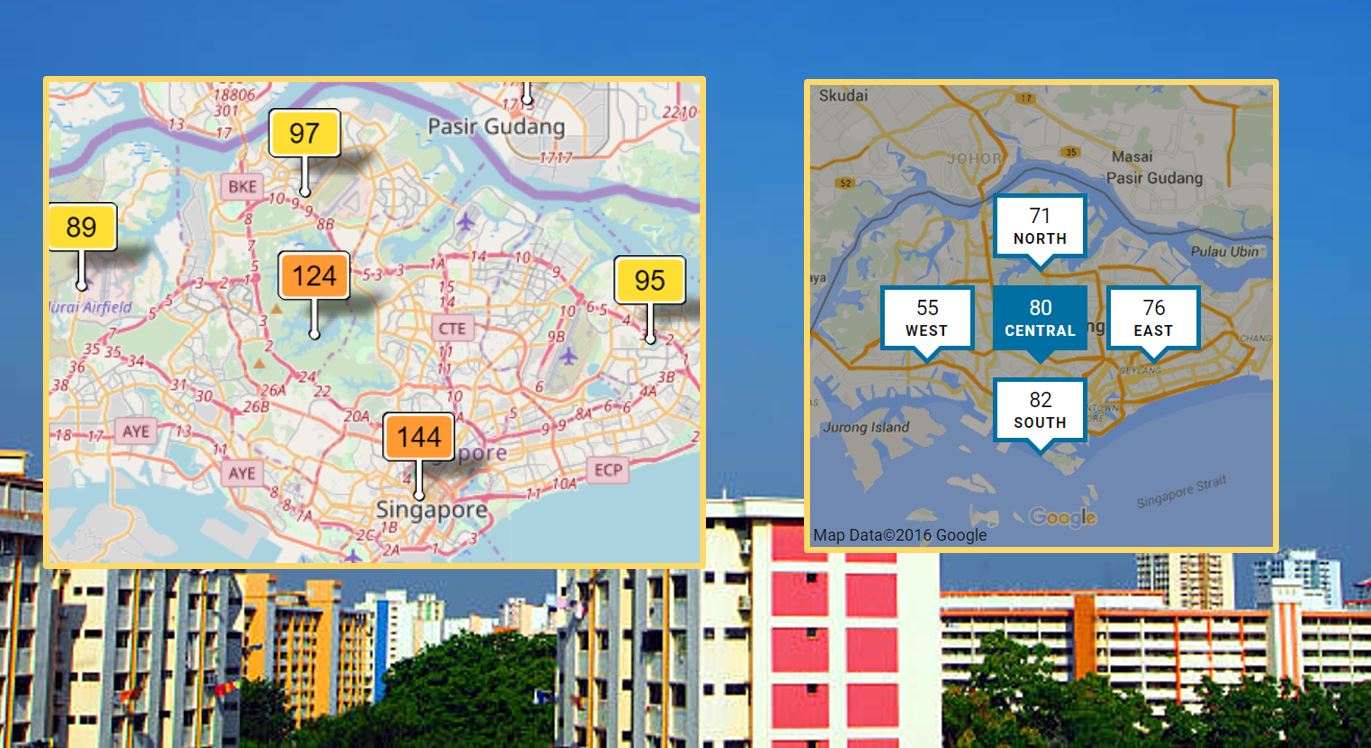[UPDATE May 22, 9.47am: Inserting statement from NEA]
You might recall that just on Saturday, The Straits Times reported that Singapore is headed for a third straight year free of haze:
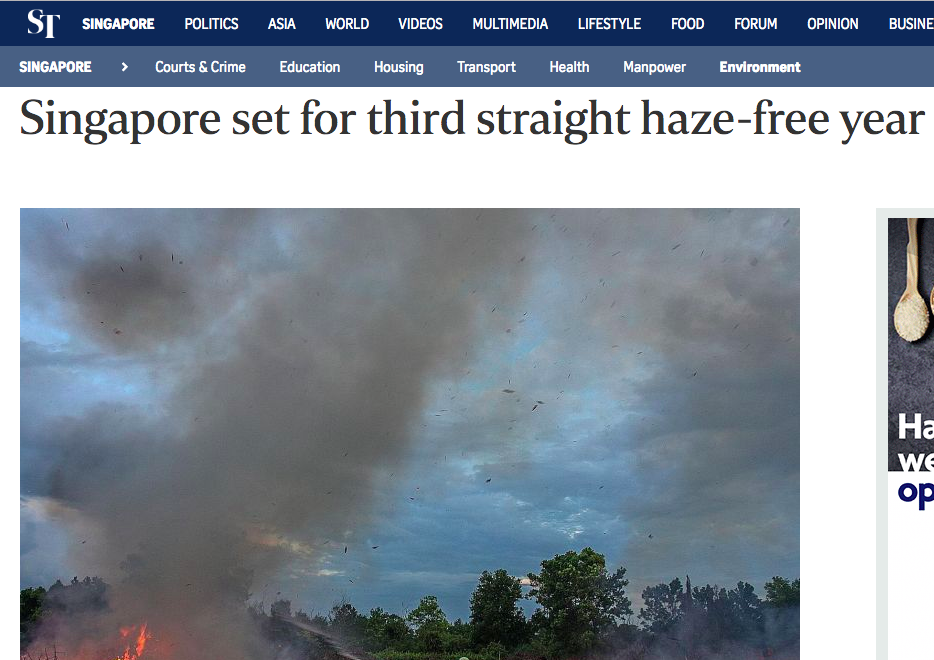 Screenshot of Straits Times article
Screenshot of Straits Times article
This morning, however, Singaporeans woke up to what felt like hazy conditions, and some took to social media to describe their observations.
Those on Twitter used the ever-handy "sghaze" hastag:
 Screenshot via Twitter
Screenshot via Twitter
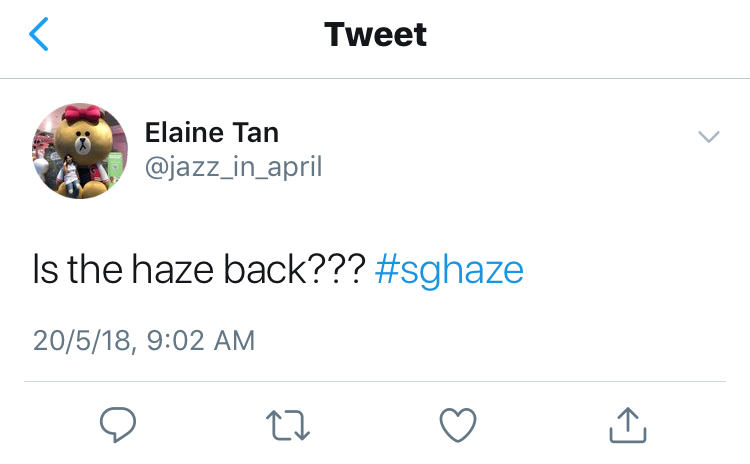 Screenshot via Twitter
Screenshot via Twitter
 Screenshot via Twitter
Screenshot via Twitter
And there was also a reddit thread discussing the air quality:
While at least one Twitter user noticed the irony:
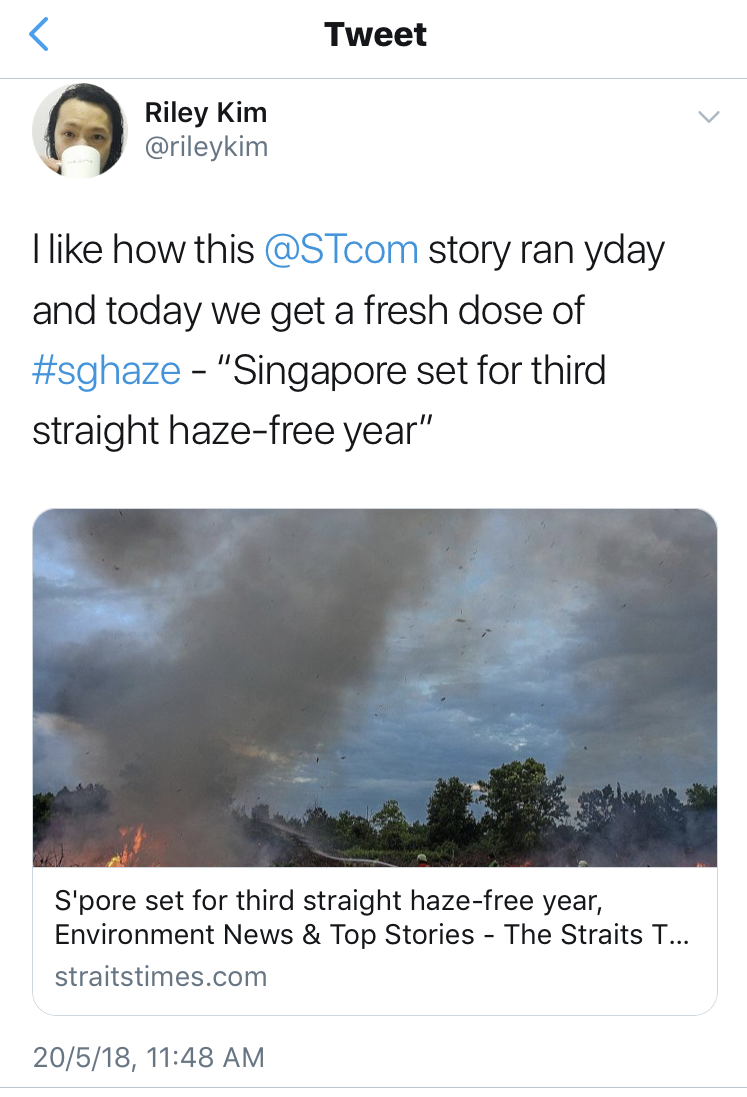 Screenshot via Twitter
Screenshot via Twitter
But we digress.
Official NEA readings
A quick check on the National Environment Agency (NEA)'s site for PSI and PM2.5 levels tell us that the 24h reading for PSI in all areas were in the Moderate range (above 50). In particular, Singapore's central area at noon showed a reading of 81 (i.e. Moderate), and 83 in the south:
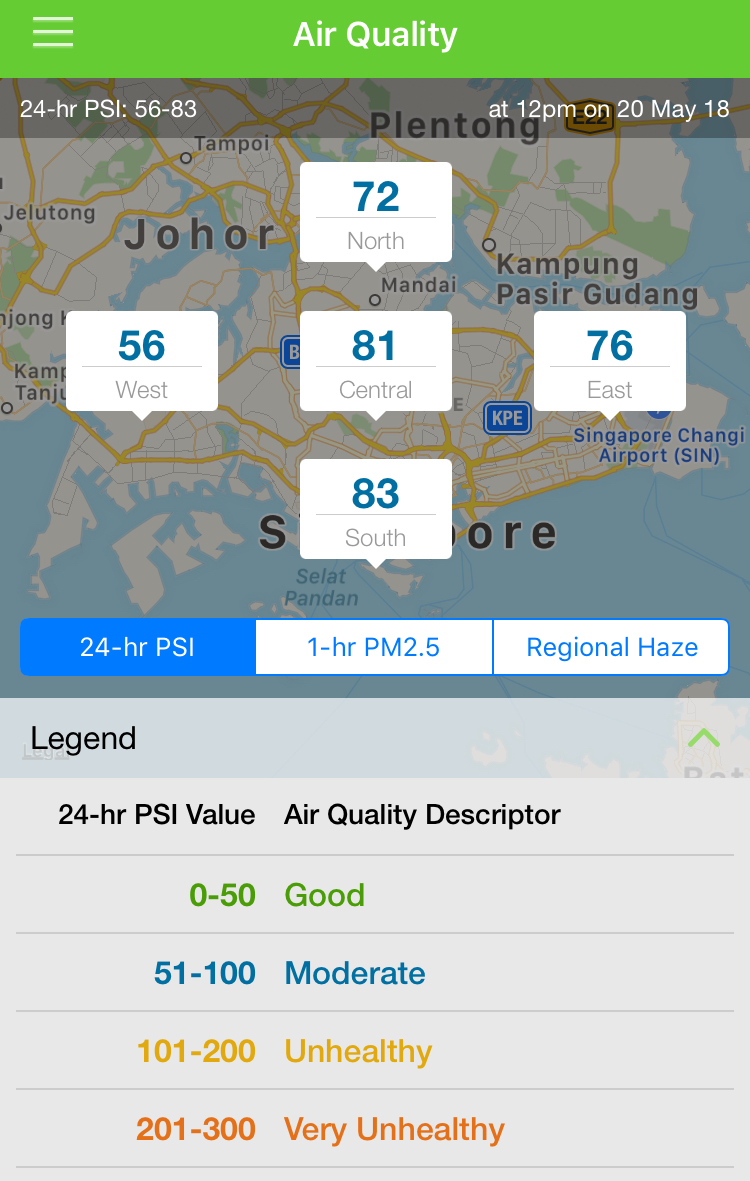 Screenshot via NEA app
Screenshot via NEA app
PM2.5 readings were also higher than usual, starting from about 5am on Sunday:
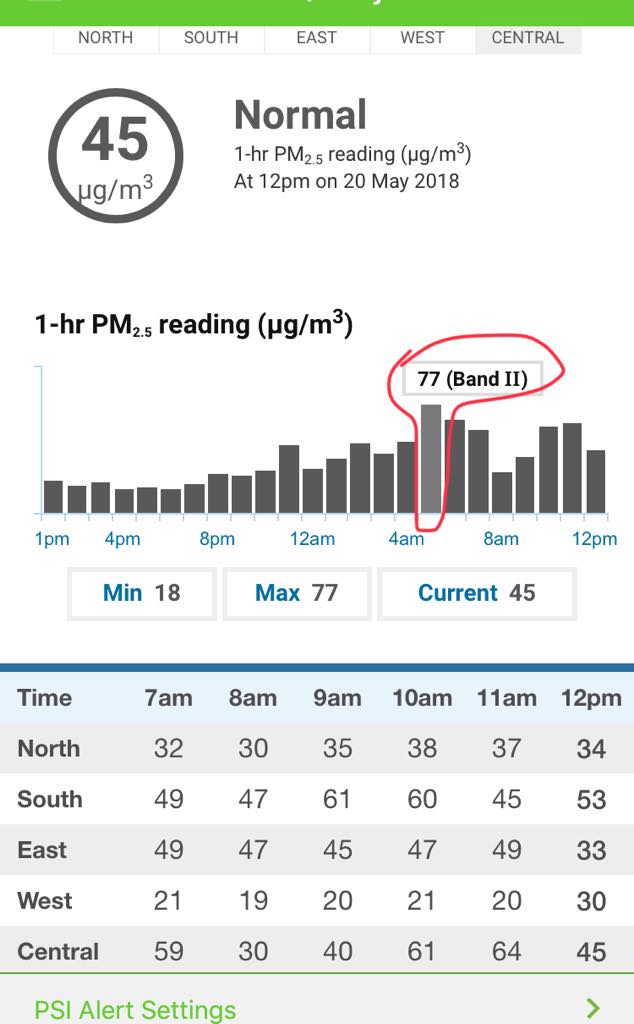 Screenshot from NEA app
Screenshot from NEA app
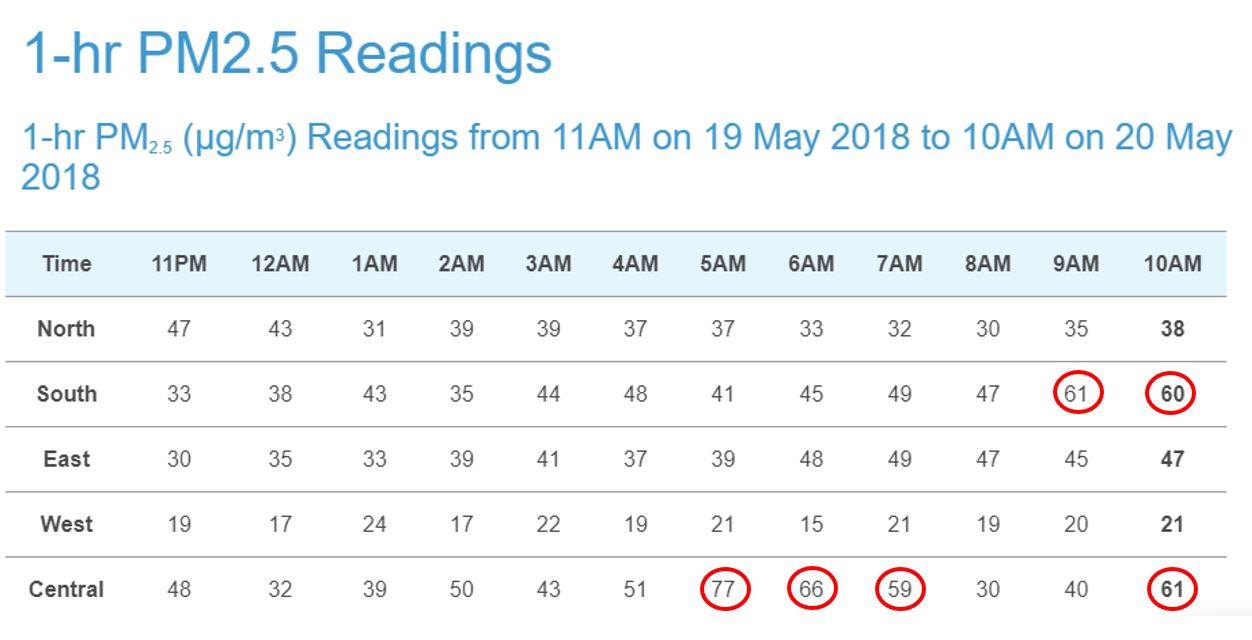 Screenshot via haze.gov.sg
Screenshot via haze.gov.sg
[related_story]
There were also very few hotspots recorded on the map on NEA's website (indicated by the red dots), and only in Malaysia:
 Screenshot from Haze.gov.sg
Screenshot from Haze.gov.sg
aqicn.org reading: 155 at 11am
Another site, aqicn.org, gives us a different reading for PM2.5 levels.
For the central region, what it showed us is that the PM2.5 reading was 155 at 11am with a maximum level of 162 — a vast difference from NEA's 11am reading of 64.
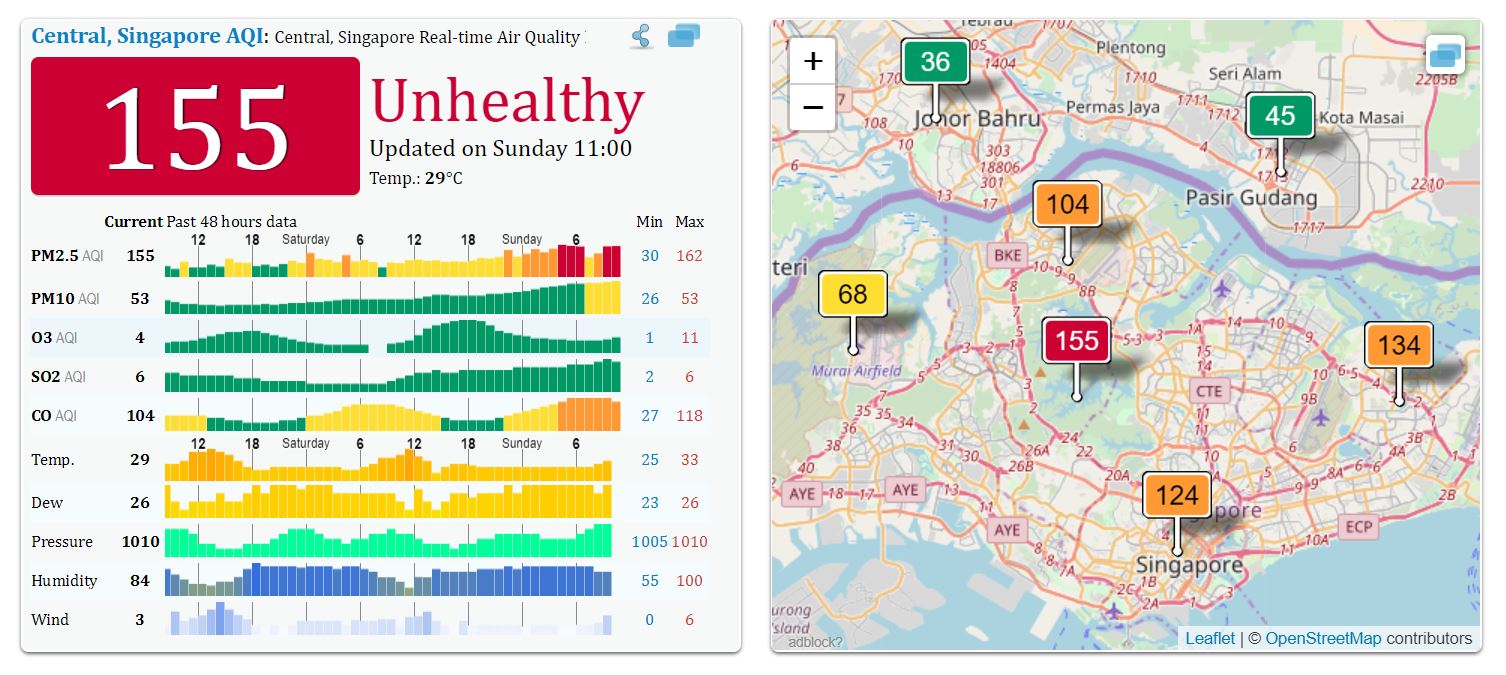 Screenshot from aqicn.org.
Screenshot from aqicn.org.
aqicn.org also states that their values are taken from official NEA numbers.
So, why the discrepancy?
Different standards used
While the PM2.5 values are taken from NEA, they are then subsequently converted to AQI (Air Quality Index) levels using the United States Environmental Protection Agency (U.S. EPA) standard.
This standard is developed by the U.S. EPA, where the measurement for air quality is indicated by AQI, not PSI.
Here's what air quality looks like over there at the moment:
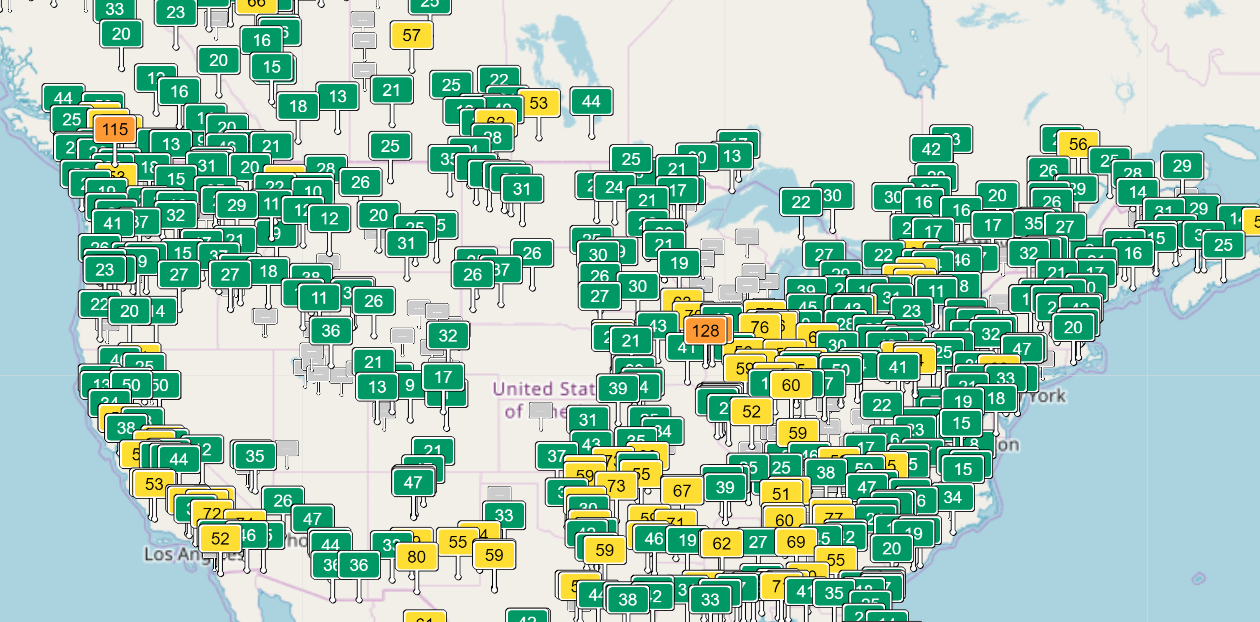 Screenshot via aqicn.org
Screenshot via aqicn.org
And for an idea of how they look measured by AQI, here are their current readings for various cities in the region:
Shanghai showed a maximum PM2.5 reading of 166 on Saturday evening:
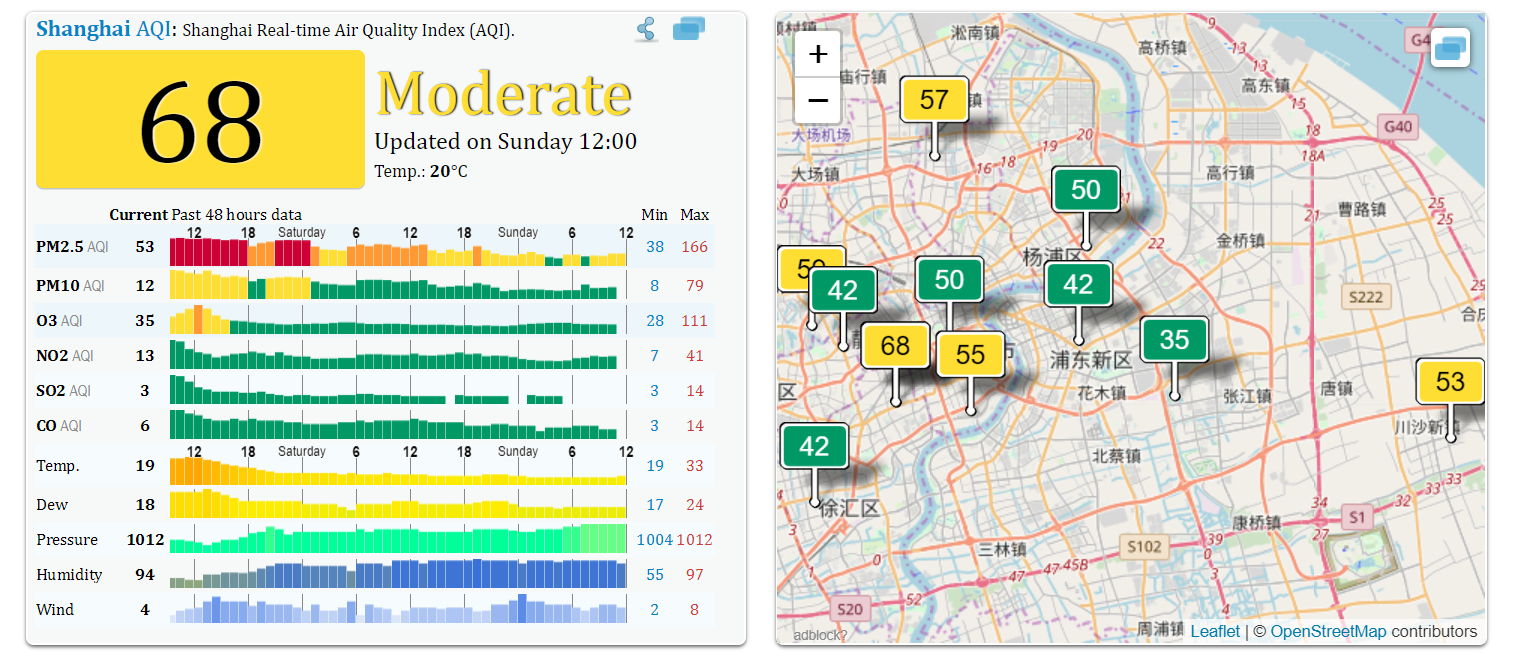 Screenshot via aqicn.org
Screenshot via aqicn.org
While in Beijing, the PM2.5 levels hit a high of 229 earlier this morning:
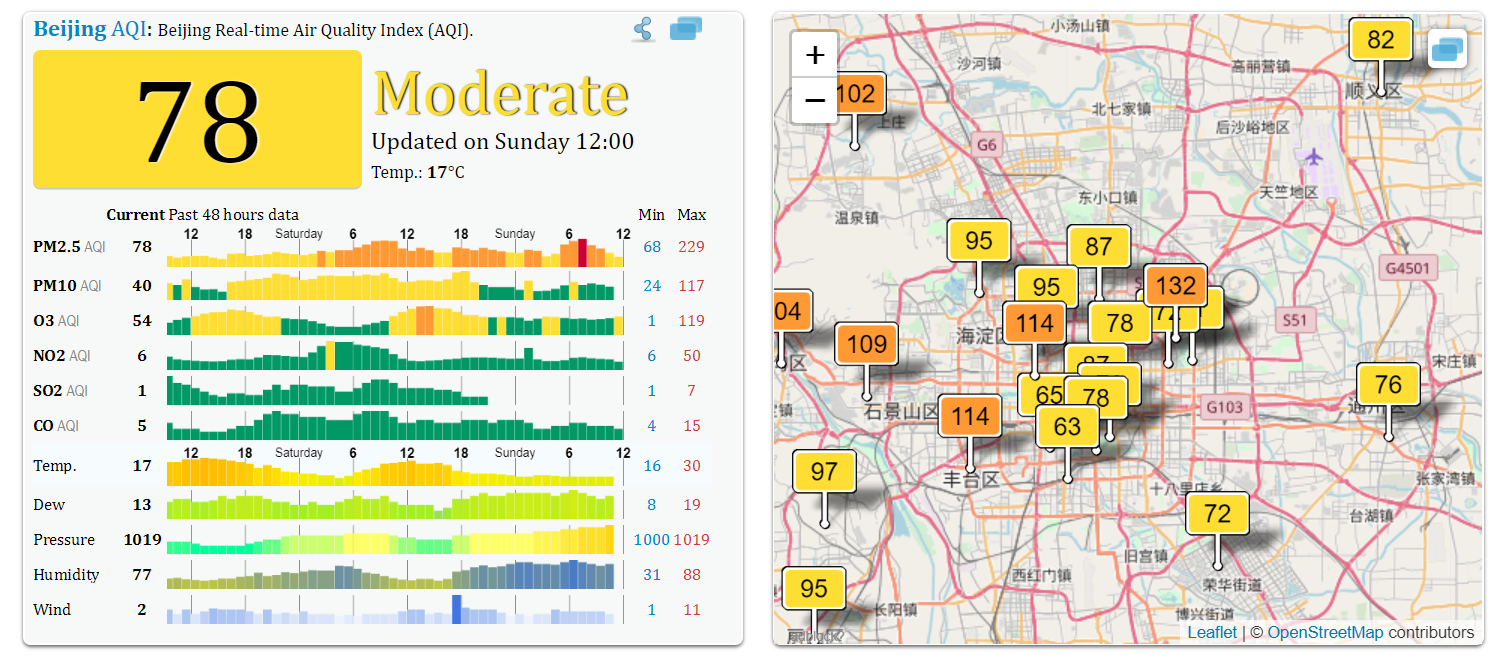 Screenshot via aqicn.org
Screenshot via aqicn.org
In essence though, the PM2.5 values measured by the AQI cannot be compared directly with NEA's because how it's calculated is different under both indexes.
The number in the red box for aqicn.org also refers to another measurement, which the NEA explains is different from PSI:
"While Singapore’s PSI is modelled after the USEPA AQI national reporting system, it is not identical to the USEPA AQI. The only country that adopts the USEPA AQI is the US. It is therefore incorrect to compare the PSI with other air quality indices which are calculated using different methodologies."
PSI is official S'pore standard
NEA maintains that PSI is the official national reporting system for air quality in Singapore.
However, other countries may have different standards of air quality which are calculated differently according to local needs:
"There are no international guidelines on how air quality indices should be computed. Countries adopt different index systems based on their local needs and circumstances."
For instance, Malaysia uses the Air Pollutants Index, while the United States uses Air Quality Index.
While these indexes have similarities in the parameters used, there is variation in the exact computation methodology.
PSI, or Pollutant Standards Index, is currently based on six air pollutants: Particulate matter (PM10), fine particulate matter (PM2.5), sulphur dioxide (SO2), carbon monoxide (CO), ozone (O3) and nitrogen dioxide (NO2).
In Singapore, parameters for determining PSI were tweaked in 2014 to include PM2.5 readings. This was because PM2.5 concentrations were found to be the most significant pollutant in haze episodes.
All that said, we've asked NEA why we're seeing higher levels of PM2.5 concentrations as well as overall PSI, and will update you when we hear from them.
[Update May 22, 9.47am: Inserting reply from NEA spokesperson]
"The slightly hazy conditions experienced in the morning of 20 May were due to the accumulation of particulate matter under light wind conditions. The conditions improved in the late morning due to a strengthening of winds and the onset of showers in Singapore."
Top photo composite image from istockphoto & screenshots from aqicn.org/NEA.
If you like what you read, follow us on Facebook, Instagram, Twitter and Telegram to get the latest updates.
